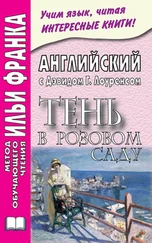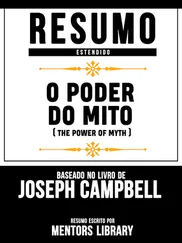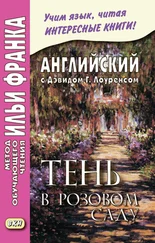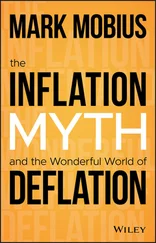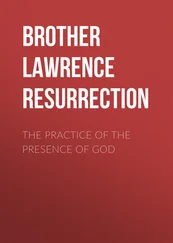Edwin Durning-Lawrence - The Shakespeare Myth
Здесь есть возможность читать онлайн «Edwin Durning-Lawrence - The Shakespeare Myth» — ознакомительный отрывок электронной книги совершенно бесплатно, а после прочтения отрывка купить полную версию. В некоторых случаях можно слушать аудио, скачать через торрент в формате fb2 и присутствует краткое содержание. Жанр: foreign_antique, foreign_prose, на английском языке. Описание произведения, (предисловие) а так же отзывы посетителей доступны на портале библиотеки ЛибКат.
- Название:The Shakespeare Myth
- Автор:
- Жанр:
- Год:неизвестен
- ISBN:нет данных
- Рейтинг книги:5 / 5. Голосов: 1
-
Избранное:Добавить в избранное
- Отзывы:
-
Ваша оценка:
- 100
- 1
- 2
- 3
- 4
- 5
The Shakespeare Myth: краткое содержание, описание и аннотация
Предлагаем к чтению аннотацию, описание, краткое содержание или предисловие (зависит от того, что написал сам автор книги «The Shakespeare Myth»). Если вы не нашли необходимую информацию о книге — напишите в комментариях, мы постараемся отыскать её.
The Shakespeare Myth — читать онлайн ознакомительный отрывок
Ниже представлен текст книги, разбитый по страницам. Система сохранения места последней прочитанной страницы, позволяет с удобством читать онлайн бесплатно книгу «The Shakespeare Myth», без необходимости каждый раз заново искать на чём Вы остановились. Поставьте закладку, и сможете в любой момент перейти на страницу, на которой закончили чтение.
Интервал:
Закладка:
Sir Edwin Durning-Lawrence
The Shakespeare Myth
THE FOLIO OF THE PLAYS, 1623
IT is now universally admitted that the Plays known as Shakespeare's are the greatest "Birth of Time," the most wonderful product of the human mind which the world has ever seen, that they evince the ripest classical scholarship, the most perfect knowledge of Law, and the most intimate acquaintance with all the intricacies of the highest Court life.
The Plays as we know them, appeared in the Folio, published in 1623, seven years after Shakespeare's death in 1616. This volume contains thirty-six plays. Of this number only eight are substantially in the form in which they were printed in Shakespeare's lifetime. Six are greatly improved. Five are practically rewritten, and seventeen are not known to have been printed before Shakespeare's death, although thirteen plays of similar names are registered or in some way referred to.
The following particulars are mainly derived from Reed's "Bacon our Shakespeare," published 1902. The spelling of the first Folio of 1623 has, however, been strictly followed.
THE EIGHT WHICH ARE PRINTED IN THE FOLIO SUBSTANTIALLY AS THEY ORIGINALLY APPEARED IN THE QUARTOS ARE: —
1. Much ado about Nothing.
2. Loves Labour lost. 1 1 The scene of the play is Navarre and one of the characters is Biron. A passport given to Bacon's brother Anthony in 1586 from the court of Navarre, is signed "Biron." (British Museum Add. MS. 4125).
3. Midsommer Nights Dreame.
4. The Merchant of Venice.
5. The First part of King Henry the fourth.
6. The Second part of K. Henry the fourth.
7. Romeo and Juliet.
8. The Tragedie of Troylus and Cressida. 2 2 This has a new title and a Prologue in the Folio. This extremely learned play which we are told was "never clapper-clawd with the palmes of the vulger… or sullied with the smoaky breath of the multitude," has recently been shewn by Mrs. Hinton Stewart to be a satire upon the court of King James I.
THE SIX WHICH HAVE BEEN GREATLY IMPROVED ARE: —
1. The Life & death of Richard the second. Corrections throughout.
2. The Third part of King Henry the sixt. New title, 906 new lines, and many old lines retouched.
3. The Life & Death of Richard the Third. 193 new lines added, 2,000 lines retouched.
4. Titus Andronicus. One entire new scene added.
5. The Tragedy of Hamlet. Many important additions and omissions.
6. King Lear. 88 new lines, 119 lines retouched.
THE FIVE WHICH HAVE BEEN PRACTICALLY REWRITTEN ARE: —
1. The Merry Wives of Windsor. 1,081 new lines, the text rewritten.
2. The Taming of the Shrew. New title, 1,000 new lines added, and extensive revision.
3. The Life and Death of King John. New title,
1,000 new lines including one entire new scene. The dialogue rewritten.
4. The Life of King Henry the Fift. New title, the choruses and two new scenes added. Text nearly doubled in length.
5. The Second part of King Hen. the Sixt. New title, 1,139 new lines, and 2,000 old lines retouched.
[The practice of false-dating books of the Elizabethan period was not uncommon, instances of as much as thirty years having been discovered. It has been proved by Mr. A. W. Pollard, of the British Museum; by Mr. W. W. Greg, Librarian of Trinity College, Cambridge; and by Prof. W. J. Neidig, that four of these, viz., "A Midsommer Nights Dreame," and "The Merchant of Venice," both dated 1600, and "King Lear," and "Henry the Fift," both dated 1608, were in fact printed in 1619, three years after Shakespeare's death.]
THE THIRTEEN WHICH SEEM NOT TO HAVE BEEN PRINTED BEFORE SHAKESPEARE'S DEATH,
although plays of somewhat similar names are registered or in some way referred to, are: —
1. The Tempest.
2. The First part of King Henry the Sixt.
3. The two Gentlemen of Verona.
4. Measure for Measure.
5. The Comedy of Errours.
6. As you Like it.
7. All is well, that Ends well.
8. Twelfe-Night, or what you will.
9. The Winters Tale.
10. The Life and death of Julius Cæsar.
11. The Tragedy of Macbeth.
12. Anthony and Cleopater.
13. Cymbeline King of Britaine.
THE FOUR WHICH SEEM NEITHER TO HAVE BEEN PRINTED NOR REFERRED TO TILL AFTER SHAKESPEARE'S DEATH ARE: — 3 3 The above very strongly confirms Mrs. Gallup's reading of the Cypher, viz.: that there are twenty-two new plays in the Folio. The Tempest, with Timon of Athens and Henry VIII., seems to be largely concerned with the story of Bacon's fall from his high offices in 1621, and Emile Montégut, writing in the "Revue des Deux Mondes" of August, 1865, says that the Tempest is evidently the author's literary testament.
1. The Life of King Henry the Eight.
2. The Tragedy of Coriolanus.
3. Timon of Athens.
4. Othello, the Moore of Venice.
Of the above plays, most of those which were printed in Shakespeare's lifetime originally appeared anonymously; indeed, no play bore Shakespeare's name until New Place, Stratford-on-Avon, had been purchased for him and £1,000 given to him in 1597. The first play to bear the name of W. Shakespere was Loves Labors Lost, which appeared in the following year – 1598.
Stratford, to which Shakespeare was sent in 1597, was at that period much farther from London for all practical purposes than Canada is to-day, and Shakespeare did not go there for week ends, but he permanently resided there, only very occasionally visiting London, when he lodged at Silver Street with a hairdresser named Mountjoy.
It is exceedingly important and informing to remember that Shakespeare's name never appeared upon any play until he had been permanently sent away from London, and that his wealth was simply the money – £1,000 – given to him in order to induce him to incur the risk entailed by allowing his name to appear upon the plays. Such risk was by no means inconsiderable, because Queen Elizabeth was determined to punish the author of Richard the Second, a play which greatly incensed her; she is reported to have said, "Seest thou not that I am Richard the Second?" There is no evidence that Shakespeare ever earned so much as ten shillings in any one week while he lived in London.
At Stratford, Shakespeare sold corn, malt, etc., and lent small sums of money, and indeed, was nothing more than a petty tradesman, a fact of which we are quite clearly informed in "The Great Assises holden at Parnassus," printed in 1645, where Bacon is put as "Chancellor of Parnassus," i.e., greatest of the world's poets, and Shakespeare appears as "the writer of weekly accounts." This means that the only literature for which Shakespeare was responsible consisted of his small tradesman's accounts sent out weekly by his clerk; because, as will be shewn presently, Shakespeare was totally unable to write a single letter of his own name.
Let us now return to the Folio of Shakespeare's plays, published in 1623. On the title page appears a large half-length figure drawn by Martin Droeshout, which is known as the Authentic (i.e., the authorised) portrait of Shakespeare. Martin Droeshout, I should perhaps mention, is scarcely likely to have ever seen Shakespeare, as he was only 15 years of age when Shakespeare died. On the cover of this pamphlet will be found a reduced facsimile of the title page of the Folio of 1623. It is almost inconceivable that people with eyes to see should have looked at this so-called portrait for 287 years without perceiving that it consists of a ridiculous, "putty-faced mask," fixed upon a stuffed dummy clothed in a trick coat. 4 4 This stuffed dummy is surmounted by a mask with an ear attached to it not in the least resembling any possible human ear, because, instead of being hollowed, it is rounded out something like the back side of a shoehorn, so as to form a sort of cup to cover and conceal any real ear that might be behind it.
Интервал:
Закладка:
Похожие книги на «The Shakespeare Myth»
Представляем Вашему вниманию похожие книги на «The Shakespeare Myth» списком для выбора. Мы отобрали схожую по названию и смыслу литературу в надежде предоставить читателям больше вариантов отыскать новые, интересные, ещё непрочитанные произведения.
Обсуждение, отзывы о книге «The Shakespeare Myth» и просто собственные мнения читателей. Оставьте ваши комментарии, напишите, что Вы думаете о произведении, его смысле или главных героях. Укажите что конкретно понравилось, а что нет, и почему Вы так считаете.


